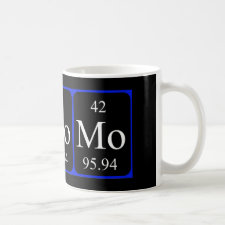
Authors: Bereli N, Ertürk G, Tümer MA, Say R, Denizli A
Article Title: Oriented immobilized anti-hIgG via Fc fragment-imprinted PHEMA cryogel for IgG purification.
Publication date: 2013
Journal: Biomedical Chromatography
Volume: 27
Issue: (5)
Page numbers: 599-607.
DOI: 10.1002/bmc.2833
Abstract: Antibodies are used in many applications, especially as diagnostic and therapeutic agents. Among the various techniques used for the purification of antibodies, immunoaffinity chromatography is by far the most common. For this purpose, oriented immobilization of antibodies is an important step for the efficiency of purification step. In this study, Fc fragment-imprinted poly(hydroxyethyl methacrylate) cryogel (MIP) was prepared for the oriented immobilization of anti-hIgG for IgG purification from human plasma. Non-imprinted poly(hydroxyethyl methacrylate) cryogel (NIP) was also prepared for random immobilization of anti-hIgG to compare the adsorption capacities of oriented (MIP/anti-hIgG) and random (NIP/anti-hIgG) cryogel columns. The amount of immobilized anti-hIgG was 19.8 mg/g for the NIP column and 23.7 mg/g for the MIP column. Although the amount of immobilized anti-hIgG was almost the same for the NIP and MIP columns, IgG adsorption capacity was found to be three times higher than the NIP/anti-hIgG column (29.7 mg/g) for the MIP/anti-hIgG column (86.9 mg/g). Higher IgG adsorption capacity was observed from human plasma (up to 106.4 mg/g) with the MIP/anti-hIgG cryogel column. Adsorbed IgG was eluted using 1.0 m NaCl with a purity of 96.7%. The results obtained here are very encouraging and showed the usability of MIP/anti-hIgG cryogel prepared via imprinting of Fc fragments as an alternative to conventional immunoaffinity techniques for IgG purification. Copyright © 2012 John Wiley & Sons, Ltd
Template and target information: protein, antibody, Fc fragment, hIgG
Author keywords: molecular imprinting, immunoaffinity chromatography, Fc fragment, antibody purification, Cryogel



Join the Society for Molecular Imprinting

New items RSS feed
Sign-up for e-mail updates:
Choose between receiving an occasional newsletter or more frequent e-mail alerts.
Click here to go to the sign-up page.
Is your name elemental or peptidic? Enter your name and find out by clicking either of the buttons below!
Other products you may like:
 MIPdatabase
MIPdatabase









